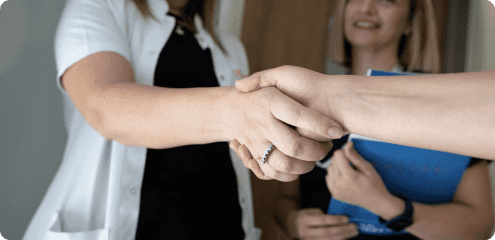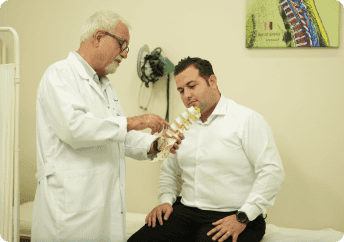What Vatan Healthcare Can Offer You
Price Range
| Blepharoplasty (Upper Eyelid) | €1,400 |
| Blepharoplasty (Lower Eyelid) | €1,600 |
| Blepharoplasty (Lower and Upper Eyelid) | €2,700 |
| Cat Eyes (Temporal Lift – Fox Eye) | €5,500 |
| Brow Lift | €1000 |
Please note that the price range of the surgery provided are estimates. A bespoke package will be developed after a thorough evaluation of your individual case. Schedule your free first consultation with us today here.
Package Details
Consultation with your Surgeon
Interpretation service throughout your hospital stay
Related health tests
Surgery
Anaesthesia
24/7 access to Nurses' station during your stay
Hospital accommodation for you and your companion with access to Wi-Fi and Netflix
Transportation service from Istanbul to the hospital for your treatment and back to the airport at the end of your procedure for you and your companion
Our Blepharoplasty & Brow Lift Physicians

Dr. Lütfi Murat Deniz

Dr. Muhammed Nebil Selimoğlu

Dr. Çiğdem Akdağ Koçer
Before / After Photos
View pre and post operation photos here
of patients treated by our surgeons.
Post Treatment Care & Recovery

View Our Post Treatment Care & Recovery
Click on the individual tabs below for a detailed guide on the highlighted treatments.
Eyelid Surgery
Patients may choose to undergo upper and lower eyelid surgery for a variety of aesthetic and medical reasons. Some of the conditions that Blepharoplasty can help address are:
- Correcting Droopy or Sagging Eyelids
- Reducing Fine Lines and Wrinkles
- Enhancing Eyelid Contour and Definition
- Removing Under-Eye Bags and Puffiness
- Correcting Hollow or Sunken Eyes
This can be performed on the upper eyelids, lower eyelids, or both, depending on the patient's needs.
Eyelid Surgery Procedures: A Step-by-Step Guide
- 1. Preoperative Assessment
The process begins with a detailed consultation with one of our experienced surgeons. The surgeon will review the patient’s medical history, discusses any medications or conditions that might affect the surgery, and evaluates the patient's eyelid anatomy and skin quality.
Our surgeon then assesses the degree of eyelid drooping, puffiness, excess skin, and muscle laxity to determine the most appropriate surgical approach.
The patient and surgeon discuss the desired outcomes, surgical techniques, potential risks, and recovery process.
Preoperative instructions will be provided, which may include avoiding certain medications or supplements, fasting, putting a stop to habits such as smoking or drinking, to reduce the risk of bleeding and promote healing. - 2. Anaesthesia
On the day of surgery, the patient is taken to the operating room or surgical suite. Blepharoplasty is typically performed under local anaesthesia with sedation, meaning the patient is awake but relaxed and pain-free.
In some cases, particularly when combined with other facial procedures, general anaesthesia may be used to ensure the patient is fully asleep during the surgery.


- 3. Marking and Incision Planning
Before beginning the procedure, the surgeon carefully marks the upper and/or lower eyelids to guide the placement of incisions and the amount of skin, fat, or muscle to be removed. These markings help ensure symmetry and optimal results. - 4. Upper Eyelid Surgery Procedure
The surgeon makes an incision along the natural crease of the upper eyelid, which allows the scar to be well hidden. The incision typically extends slightly beyond the outer corner of the eye to address any excess skin folds.
Through this incision, the surgeon removes or repositions excess skin, fat, and sometimes a small amount of muscle to create a smoother and more defined eyelid contour. The amount of tissue removed depends on the patient’s anatomy and desired outcome.
The incisions are then closed with fine sutures or surgical glue to minimise scarring. The sutures may be removed after about 5 to 7 days, depending on the surgeon's preference and the patient's healing. - 5. Lower Eyelid Surgery Procedure
The surgeon makes an incision just below the lower lash line (subciliary approach) or on the inside of the lower eyelid (transconjunctival approach). The choice of technique depends on the patient's anatomy and the extent of correction needed.- Subciliary Approach: This approach involves an incision just below the lash line, allowing the surgeon to remove or reposition fat and tighten skin and muscle. It is suitable for patients with excess skin and more significant fat deposits.
- Transconjunctival Approach: This approach involves an incision on the inner surface of the lower eyelid, allowing access to excess fat without external scarring. It is typically used for younger patients with good skin elasticity and primarily excess fat.
Through the chosen incision, the surgeon removes or repositions excess fat, tightens underlying muscles, and trims any loose skin to smooth out the under-eye area and reduce puffiness.
The incisions are closed with dissolvable sutures (for the transconjunctival approach) or fine sutures (for the subciliary approach), which are usually removed after about 5 to 7 days.
- 6. Re-draping the Skin and Final Adjustments
After removing excess tissue and fat, the skin is gently re-draped over the newly contoured area. The surgeon ensures that the eyes appear symmetrical and natural-looking. Adjustments may be made to ensure both sides match and achieve the desired aesthetic results. - 7. Application of Dressings and Cold Compresses
Once the incisions are closed, small sterile dressings may be applied to protect the incision sites. Cold compresses or cooling eye pads are placed over the eyes to minimise swelling and bruising.
An ophthalmic ointment may be applied to keep the eyes lubricated and prevent dryness during the initial healing phase.


- 8. Eyelid Surgery Postoperative Care and Recovery
After surgery, the patient is taken to a recovery area where they are monitored until fully awake and stable. Blepharoplasty is typically an outpatient procedure, allowing patients to go home the same day.
Patients are provided with detailed postoperative care instructions, including how to clean the incision sites, apply ointments, and use cold compresses to reduce swelling and bruising.
Pain is usually mild to moderate and can be managed with prescribed pain medications and over-the-counter pain relievers. Patients are advised to keep their heads elevated, avoid strenuous activities, and refrain from rubbing their eyes.
Follow-up consultations are scheduled within the first week after surgery to monitor healing, remove sutures (if non-dissolvable), and assess for any complications such as infection, excessive swelling, or bleeding.
Additional follow-up consultations may be scheduled over the next few weeks to ensure optimal healing and results.
Like any surgical procedure, Blepharoplasty carries potential risks and complications, such as infection, bleeding, scarring, dry eyes, temporary or permanent changes in eyelid sensation, asymmetry, and, rarely, ectropion (outward turning of the eyelid) or entropion (inward turning of the eyelid). However, most complications are rare and can be minimised by following the surgeon's postoperative care instructions carefully.
As people age, the skin and soft tissues in the forehead lose elasticity, causing the brows to droop and the space between the lashes and eyebrows to shrink - leading to a tired, sad, or even angry expression.
A brow lift repositions your eyebrows to their natural height, instantly revitalising your appearance. For patients whose lateral eyebrows fall below the upper bone of the eye, the brow lift can also be performed during upper eyelid surgery. This involves adjusting the lateral part of the eyebrow through a small incision on the inner side or directly above the eyebrow, resulting in an elevated position that provides a more youthful and refreshed appearance.
A brow lift is an ideal choice for those with low or sagging brows, especially if it impacts the look of your upper eyelids, offering a refreshed, rejuvenated look you'll love.
Brow Lift Surgery Procedures: A Step-by-Step Guide
- 1. Preoperative Assessment
The process begins with a detailed consultation with an experienced surgeon. During this appointment, the surgeon reviews the patient’s medical history, performs a physical examination, and evaluates the patient's eyelid anatomy and skin quality.
Our surgeon then assesses the degree of eyelid drooping, puffiness, excess skin, and muscle laxity to determine the most appropriate surgical approach.
Preoperative instructions will be provided, which may include avoiding certain medications or supplements, fasting, putting a stop to habits such as smoking or drinking, to reduce the risk of bleeding and promote healing. - 2. Anaesthesia
On the day of surgery, the patient is taken to the operating room. A brow lift is typically performed under general anaesthesia, ensuring the patient is asleep and pain-free during the procedure.
In some cases, local anaesthesia with sedation may be used.


- 3. Marking and Incision Planning
Before the surgery begins, the surgeon makes precise markings on the forehead and brow area to guide the placement of incisions and ensure symmetry.
The type of brow lift technique used will determine the location and size of the incisions. Common brow lift techniques include:- Endoscopic Brow Lift: This minimally invasive technique uses several small incisions hidden in the hairline. A small camera (endoscope) is inserted through these incisions to guide the surgeon in repositioning the brow tissues.
- Coronal Brow Lift: This technique involves a longer incision made across the top of the scalp, either behind or within the hairline. The coronal lift allows for significant brow repositioning and is suitable for patients with more severe sagging.
- Temporal (Limited Incision) Brow Lift: This technique involves smaller incisions near the temples, allowing for a more targeted lift of the outer portion of the brow.
- Direct Brow Lift: This technique involves incisions made directly above the brow, typically reserved for patients with specific needs, such as those with significant asymmetry or medical conditions like facial paralysis.
- 4. Incision and Tissue Repositioning
Once the incisions are made, the surgeon lifts and repositions the underlying tissues of the brow and forehead. Depending on the technique used, the surgeon may release the brow’s underlying muscles, smooth forehead wrinkles, and elevate the brow to a more youthful and aesthetically pleasing position.
For endoscopic brow lifts, specialised instruments are used to carefully adjust the muscles and tissue through the small incisions while viewing the area with the endoscope. - 5. Removing Excess Skin and Tissue
After repositioning the brow and forehead tissues, the surgeon may remove any excess skin to ensure a smooth and natural-looking contour.
In coronal brow lifts, more significant amounts of skin may be removed, while in endoscopic brow lifts, the procedure focuses more on repositioning without significant skin removal. - 6. Closing the Incisions
After the tissue repositioning and any necessary skin removal, the incisions are carefully closed with sutures or surgical staples.
For endoscopic and temporal brow lifts, the incisions are small and are typically hidden within the hairline. In coronal brow lifts, the incision may be larger but is also hidden in the hair-bearing scalp to minimise visible scarring. - 7. Application of Dressings and Cold Compresses
Once the incisions are closed, the surgeon applies sterile dressings to the forehead and brow area to protect the incision sites and promote healing.
Some patients may be fitted with a soft compression bandage to reduce swelling and support the newly repositioned brow. - 8. Brow Lift Postoperative Care and Recovery
After surgery, the patient is taken to a recovery area where they are monitored until fully awake and stable. Brow lifts are typically an outpatient procedure, allowing patients to go home the same day if there are no complications.
Patients are provided with detailed postoperative care instructions, including how to care for the incision sites, manage pain, and use cold compresses to minimise swelling and bruising.
Pain is usually mild to moderate and can be managed with prescribed pain medications. Swelling and bruising around the eyes and forehead are common in the first week but will gradually subside.
Follow-up consultations are scheduled within the first week after surgery to monitor healing, remove sutures (if non-dissolvable), and assess for any complications such as infection, excessive swelling, or bleeding.
Additional follow-up consultations may be scheduled over the next few weeks to ensure optimal healing and results.
As with any surgery, Brow lifts carry potential risks and complications, including infection, bleeding, scarring, changes in skin sensation, temporary or permanent numbness, and asymmetry. In rare cases, there may be hair loss around the incision sites or difficulty moving the forehead muscles. Most complications are rare and can be minimised by following the surgeon’s postoperative care instructions closely.
How Will I Know Which Rhinoplasty Procedure Is Right For Me?
Each patient has a unique nasal structure, including differences in bones, cartilage, and skin.
The specific type of Rhinoplasty procedure is determined for each individual patient after a physical examination and consultation with a member of our Rhinoplasty team.
To achieve the desired results, it is crucial that our patient's preferences are closely aligned with our rhinoplasty specialist's recommendations. Effective communication is key to ensuring that our patient's expectations are clearly understood mutually agreed upon.


















